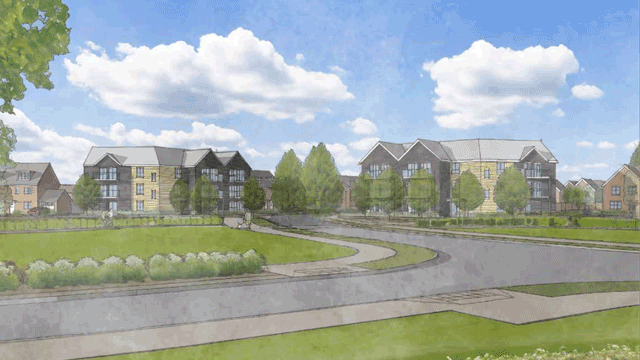Gated development – Estate road – Amenity land – Defendants purchasing estate road and grass verge on development – Claimant neighbours relying on alleged agreement to purchase land on behalf of all residents – Whether defendants holding land on constructive trust – Claim dismissed
The claimants and the defendants were neighbours in a gated development that comprised three detached houses. AEL had purchased the site been and constructed the development together with an estate road to serve the houses, leaving a grass verge to the west (the western strip).
The claimants and the defendants assumed that they would acquire that portion of the estate road and the western strip adjacent to their properties. However, AEL retained the land, merely granting rights of way over the road and agreeing to maintain it for three years in the hope of acquiring adjacent land for the purposes of further development. In 2003, however, it sold the third property to its sitting tenants, including that part of the western strip immediately opposite the house. In 2004, the estate road was sold to the defendants together with the remainder of the western strip. An issue arose as to whether the defendants were entitled to retain that amenity land for their own benefit.
The claimants sought a declaration, inter alia, that the defendants held the amenity land on a constructive trust, in accordance with the principle set out in Pallant v Morgan [1953] Ch 43, for the owners of all three houses on such terms as the court thought fit. They contended that there was a continuing agreement, arrangement or understanding that negotiations should have taken place with AEL to purchase the disputed land on behalf of all the residents. However, the defendants had gone behind the claimants’ backs and acquired the land for themselves.
Held: The claim was dismissed.
The claimants had not made out their claim to a constructive trust of the amenity land.
Although it was impossible to prescribe exhaustively the circumstances under which a constructive trust could be created, it was possible to recognise particular factual circumstances in which it would do so. The agreement between the parties required less than contractual certainty (otherwise a constructive trust would not be necessary), but it was not engaged with anything less than an express accord between the parties. The court would not impute an agreement to the parties based on conduct alone, although conduct could lead the court to infer that the parties had reached a consensus. Unconscionable behaviour was a necessary condition for relief by way of constructive trust, but it was insufficient by itself. The court’s aims were to recognise and prevent unconscionable behaviour and to protect people from unintended legal consequences resulting from informal relationships. Thus, it was not clear in the absence of some rubric such as “subject to contract” how informal the consensus might be. However, it was plain as a matter of law that in order to be enforced there had to have been a clear agreement on the basic details of the arrangement, with no difference of principle: Cobbe v Yeoman’s Row Management Ltd [2008] UKHL 55; [2008] 3 EGLR 31; [2008] 35 EG 142; [2008] 36 EG 142 and Thorner v Majors [2009] UKHL 18; [2009] 1 WLR 776 applied.
The pre-acquisition arrangement would colour the subsequent acquisition of land by the defendant and lead to its being treated as a trustee if it sought to act inconsistently with it. It was essential that the circumstances made it inequitable for the acquiring party to retain the property for itself in a manner that was inconsistent with the arrangement or understanding on which the non-acquiring party had acted. In order to succeed in the instant case, the claimants had to show that they had relied on the alleged agreement, arrangement or understanding. Typically, they would do so by staying out of the market or by committing expenditure that they would not otherwise have committed. However, on any view, their activity or inactivity had to be referable to the consensus on which they relied: Banner Homes Holdings Ltd (formerly Banner Homes Group plc) v Luff Developments Ltd (No 2) [2000] Ch 372 applied.
Paul Stafford (instructed by AJ Powell & Co, of Tunbridge Wells) appeared for the claimants; Timothy Morshead (instructed by Thomas Eggar LLP, of Corley) appeared for the defendants.
Eileen O’Grady, barrister









